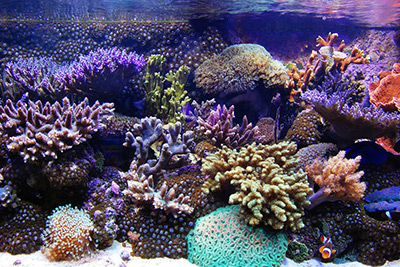Ever notice that there are lots of articles and posts out there with titles like “The Top 10 Mistakes Novice Marine Aquarists Make”? Considering that newcomers are generally much more susceptible to making major errors than their experienced counterparts are, this stands to reason. However, just because the slip-up spotlight is usually focused on newbies doesn’t mean experienced hobbyists never make mistakes. In fact, they still make their share of blunders, most of which stem from complacency or overconfidence.
So, turnabout being fair play—and to give hobby newcomers a break for a change—let’s look at what I would consider the 5 most common mistakes experienced marine aquarists make:
1. Failing to test
Experienced hobbyists may like to believe they can ascertain the nitrate level in their tank by simply sniffing the water (“Mmm, smells like 20 ppm to me. Time for a water change!”), but the fact of the matter is, routine testing of water parameters is just as important for advanced hobbyists as it is for newbies. True, they probably have a pretty solid maintenance regimen in place, so water-quality problems aren’t likely to develop suddenly. Nonetheless, absent routine testing, problems can still creep up slowly as water parameters drift away from the ideal ranges undetected.
2. Rationalizing livestock losses
Experienced hobbyists may experience fewer livestock losses than newbies do, but they still lose fish and invertebrates from time to time. And when they do, they’re sometimes better at coming up with rational excuses than at figuring out the underlying cause of the loss. (“I suspect that fish had an untreatable internal parasite coupled with an incurable iridovirus and potentially a tumor or two. Not to mention, the poor thing was probably captured with cyanide!”)
3. Succumbing to Boring Tank Syndrome
A marine tank kept for many years can begin to lose some of its luster, and looking at the same specimens year in and year out can lead to a condition known in hobby parlance as Boring Tank Syndrome (BTS). Let’s face it, when BTS sets in, we tend to let maintenance slide just a bit, the interval between water changes gets longer and longer, and we become a little less attentive to our livestock. This doesn’t usually lead to outright neglect, just a slackening of effort and focus that can result in problems such as nuisance algal blooms, the loss of sensitive specimens, etc.
4. “Rescuing” doomed specimens
Hobbyists with a lot of experience under their briny belt are sometimes tempted to “rescue” from local fish stores animals that are known to be very difficult or impossible to keep alive in captivity. The thought process here is that the fish or invertebrate, albeit likely to perish anyway, will have a much greater chance of surviving in their system than under an inexperienced novice’s care. But the fact is, whether or not that particular specimen ultimately succumbs—or where it ultimately succumbs—is irrelevant. “Rescuing” it still amounts to the sale of a species that doesn’t really belong in the general aquarium trade, which means another specimen will be collected and the unfortunate cycle will continue.
5. Forgetting they were new once too
It’s all too easy for experienced aquarists to forget that at one time, they were newcomers to the hobby and made many of the same mistakes beginners make today. This “selective memory” can lead to a lack of empathy for struggling novices or, in more extreme cases, find expression in the nasty or condescending discourse so common in certain online forums.



